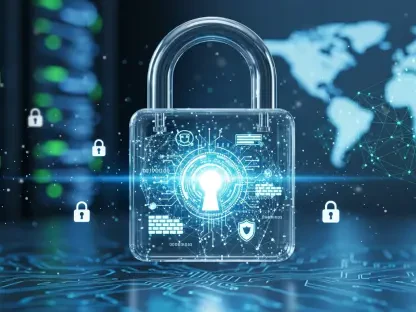Identities are at the heart of cybersecurity, serving as both the foundation and the potential weak point in secure computing processes. As we approach 2025, the landscape of cybersecurity is evolving, with identities—both human and machine—playing a crucial role. This article delves into the challenges and trends that will shape cybersecurity practices in the coming years, highlighting expert insights and anticipated developments.
The Fundamental Security Challenge
The Importance of Securing Identities
Identities are essential for ensuring that only authorized and authenticated entities can access computer systems and data. However, they also represent a significant vulnerability. The failure to secure identities often leads to severe computer compromises, making them a critical focus for cybersecurity efforts. Despite advancements in security measures, identity theft and misuse remain prevalent, indicating the need for continuous improvement and innovation.
The necessity to secure identities becomes even more critical as cyberattacks increase in sophistication, exploiting these vulnerabilities to carry out large-scale breaches and fraud. The perennial issue of protecting these identities demands an adaptive approach to identity management and authentication mechanisms. The upcoming years will require significant innovation to prevent unauthorized access and ensure the integrity of computer systems and data.
The Dichotomy of Identities in Cybersecurity
While identities are foundational to security, they are also its weakest link due to widespread vulnerabilities. The consensus among experts is that failing to secure identities is often the root cause of computer compromises. This dichotomy underscores the importance of robust identity management and the challenges that lie ahead in securing both human and machine identities.
The persistent vulnerabilities associated with identities necessitate a dual focus: improving the robustness of identity verification methods while staying vigilant against evolving threat tactics. This dichotomy creates a challenging environment where continuous adaptation and refinement are crucial, mandating a balance between usability and security. As threats become more sophisticated, the task of securing identities will demand innovative solutions and increased vigilance from cybersecurity professionals.
Human Identities
Corporate Access Exploitation
Human identities are primarily used to access computer systems within organizations and personal social services. Criminals exploit these identities for large-scale financial gains and individual fraud. In corporate environments, stolen credentials are used to breach networks, leading to the theft of proprietary information or direct financial extortion. This exploitation highlights the need for stronger identity verification methods and continuous monitoring.
The complexity of managing business systems, especially with the proliferation of cloud and SaaS services, presents significant security challenges. The integration of these services complicates identity management, making it difficult for enterprises to maintain centralized visibility and control. The interconnected nature of modern business processes amplifies the risk, requiring robust and comprehensive identity management systems that can adapt to diverse and dynamic environments.
Personal Identity Theft
Fraud against individuals using stolen identities results in unauthorized transactions, account creations, and purchases. The complexity of managing business systems, especially with the proliferation of cloud and SaaS services, presents significant security challenges. The integration of these services complicates identity management, making it difficult for enterprises to maintain centralized visibility and control.
Phishing techniques, social engineering, and AI-enhanced tactics are becoming increasingly sophisticated, posing significant threats to human identities. Experts suggest stronger identity verification methods such as Multi-Factor Authentication (MFA) and biometrics. However, the current inconsistencies in MFA deployment highlight enduring weaknesses. Emerging trends show synthetic identity fraud as a growing concern, with the creation of fake identity documents becoming more sophisticated.
Machine Identities
Volume and Management Challenges
Machine identities, used for machine-to-machine interactions, present their own set of challenges. The number of machine identities far exceeds human identities, creating gaps in visibility and security. Managing these identities is complex, and the reliance on static factors like certificates fails to address evolving threats effectively. This necessitates better governance, visibility, and security measures.
The sheer volume of machine identities exacerbates the difficulty in tracking, managing, and securing these assets within a network. As devices and applications increasingly communicate autonomously, maintaining a secure and transparent identity framework becomes more challenging. Implementing dynamic identity management techniques and automated security measures can help organizations adapt to the growing influx of machine identities and mitigate associated risks.
Static vs. Dynamic Factors
Current reliance on static factors such as certificates is insufficient against evolving threats. The manual governance of machine identities lacks the real-time visibility necessary for secure operations, leading to vulnerabilities through overprovisioning and mismanagement. The shift of attacker focus to machine identities, due to their frequently single-layer security measures, poses an increasing risk.
This reliance on static identity markers, such as certificates and fixed credentials, underscores the need for adopting more dynamic and adaptive security measures. Methods such as short-lived tokens, automated rotation, and just-in-time generation on demand provide more resilient and responsive security solutions. Continual assessment and adaptation of identity frameworks will be essential to keeping pace with ever-evolving threats in the digital landscape.
Enhancing Security Measures
To enhance security, methods such as short-lived tokens, automated rotation, and just-in-time generation on demand are suggested. These measures can help mitigate risks and ensure that machine identities are managed more effectively. The anticipated increase in machine identities underscores the need for continuous innovation in security practices.
These advanced methods bolster security by ensuring that machine identities remain agile and resilient, minimizing the window of opportunity for attackers. Additionally, implementing automated solutions reduces the burden on human administrators, promoting a more scalable and robust identity management system. As machine identities proliferate, these strategies will be critical in maintaining secure and efficient operations across complex digital ecosystems.
Influence of Artificial Intelligence (AI)
AI-Driven Threats
AI is set to play a substantial role in both the offensive and defensive aspects of cybersecurity. The potential for AI-enhanced social engineering attacks, particularly deepfakes, poses a severe threat to traditional identity verification methods. Attackers can use AI to orchestrate more sophisticated and scaled attacks, making it crucial for defenders to stay ahead of these developments.
The sophistication of AI-driven threats necessitates a proactive approach to cybersecurity, leveraging AI to anticipate and neutralize attacks before they inflict significant damage. The integration of AI into security protocols enables real-time monitoring and response, identifying and mitigating threats at unprecedented speeds. This dual-use capability of AI highlights its critical role in the evolving cybersecurity landscape, necessitating its incorporation into comprehensive security strategies.
AI-Enhanced Defenses
Conversely, AI can bolster defenses by analyzing large datasets in real-time to detect patterns indicative of identity fraud. The challenge lies in balancing AI’s capabilities to enhance security without overlooking nuanced contexts that could lead to false positives or missed threats. Integrating AI into security strategies is essential for predicting and counteracting sophisticated attacks effectively.
AI integration provides enhanced analytical capabilities, allowing security systems to identify anomalies and potential threats with greater accuracy and speed. This predictive approach facilitates more informed decision-making and proactive threat mitigation. Leveraging AI in this manner ensures a dynamic and adaptive defense system capable of evolving alongside emerging threats, solidifying its role as a pivotal component of future cybersecurity practices.
Blockchain and Decentralized Identities
Promise of Blockchain Technology
Blockchain technology offers a decentralized approach to identity management, promising enhanced security. Decentralized identity systems allow individuals to control their credentials through digital wallets, potentially offering a more secure method than traditional centralized databases. This approach can improve data privacy and control, reducing the risk of identity theft.
Blockchain’s decentralized nature provides a tamper-proof and transparent ledger for identity verification, ensuring greater trust and security in transactions. By empowering individuals with control over their identities, blockchain can reduce dependency on centralized authorities and mitigate the risks associated with large-scale data breaches. This promising technology heralds a paradigm shift in identity management, emphasizing user-centric security and privacy.
Adoption Challenges
Despite its promise, the adoption of blockchain for identity management faces challenges. Significant infrastructure and standardization are prerequisites for widespread adoption. While promising, the practical implementation of blockchain technology is anticipated to take several more years. The move towards decentralized identities suggests a future where individuals might control their digital credentials securely and autonomously.
Overcoming the technical and regulatory hurdles associated with blockchain integration will require concerted efforts from industry stakeholders and policymakers. Standardizing protocols and fostering interoperability between different blockchain systems will be essential to achieving widespread adoption. As these challenges are addressed, the potential for decentralized identities to transform cybersecurity practices and enhance data protection becomes increasingly feasible.
EU Digital Identity Wallet
An example of integrating decentralized identity technology is the EU Digital Identity Wallet. However, it faces skepticism regarding user adoption and trust. The success of such initiatives depends on achieving widespread acceptance and proving the system’s security and efficiency.
The EU Digital Identity Wallet represents a pivotal step towards realizing decentralized identity management on a large scale. Ensuring its success will involve addressing user concerns, reinforcing robust security measures, and demonstrating tangible benefits over traditional identity systems. The lessons learned from this initiative will likely inform the development and implementation of similar projects worldwide, contributing to the broader adoption of decentralized identity technologies.
Role of Zero Trust and Behavioral Analytics
Behavioral Analysis
The zero-trust approach, emphasizing ‘never trust, always verify’ principles, is essential yet limited without continuous validation. Incorporating behavioral analytics into zero-trust models is critical to detect anomalies and mitigate the risk posed by compromised but authenticated identities. This provides an additional layer of security by continuously validating identity behavior post-authentication.
Behavioral analytics empowers organizations to identify and respond to unusual patterns of behavior that may indicate a security threat. By continuously monitoring user activity and comparing it against established baselines, this approach can detect deviations that could signal a compromise. Integrating behavioral analytics into zero-trust frameworks enhances the overall security posture, enabling more effective prevention and response to identity-based threats.
Continuous Monitoring
Ensuring that identities, once validated, are continuously monitored for any unauthorized activities reduces the potential for abuse and insider threats. This ongoing vigilance is vital to mitigating risks and maintaining the integrity of sensitive data and systems.
Continuous monitoring enables real-time detection and response to potential security incidents, enhancing the organization’s ability to manage and mitigate threats proactively. By maintaining a dynamic and comprehensive view of identity-related activities, security teams can rapidly identify and address potential breaches, ensuring a resilient and secure operational environment. This approach is essential for adapting to the evolving threat landscape and safeguarding against the diverse challenges posed by cyber adversaries.
Conclusion
Identities are central to cybersecurity, acting both as the cornerstone and a potential vulnerability within secure computing. As we look toward 2025, the cybersecurity landscape is rapidly changing, and identities—whether human or machine—are set to play a pivotal role. This article explores the challenges and emerging trends poised to drive cybersecurity strategies in the near future, featuring expert perspectives and predicted advancements.
As digital identities become more complex, protecting them requires sophisticated approaches. Human identities involve safeguarding personal data from theft and ensuring secure access to sensitive information. Meanwhile, machine identities, which include devices and automated processes, introduce another layer of complexity. As the Internet of Things (IoT) expands, the integration of countless devices demands rigorous security measures to prevent breaches.
Experts predict several major trends that will shape cybersecurity practices. Artificial intelligence (AI) and machine learning (ML) are expected to enhance threat detection and response times. However, these advancements also necessitate new techniques to defend against AI-driven attacks. Blockchain technology may offer new methods for verifying identities and securing transactions, further safeguarding digital interactions.
In summary, the future of cybersecurity hinges significantly on managing identities effectively. By understanding and addressing the evolving challenges associated with human and machine identities, we can better prepare for the threats and opportunities of a digital landscape in transition.









